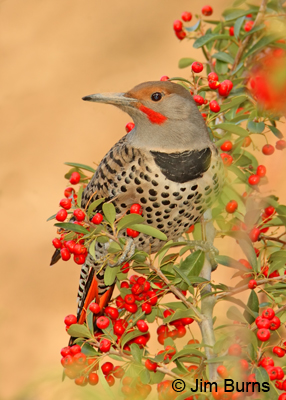
If you’ve birded long enough, you’ve heard the expression, and the implication is that birds are not very intelligent. This is true only if we are using our human intelligence as the baseline or template. Birds perceive their environment in ways vastly different than we do ours, and their perceptions are filtered through survival needs vastly different than ours. From that perspective birds are highly intelligent, and their use of tools is proof.
Most birders know the stories about Green Herons trolling twigs through the water to attract fish and Galapagos Woodpecker Finches probing with cactus thorns into holes too deep for their short bills. We watched the vagrant 1997 Band-tailed Gull at the Tijuana River mouth dropping clams onto rocks to break their shells, and we have read of a vulture in Africa that drops rocks onto Ostrich eggs for the same purpose. We were fascinated this past week to discover, in our own backyard, an example of avian “insight learning” which we had never seen or read.
Our backyard has two large old olive trees which we have never had “fixed” because, despite the mess underfoot, we’ve discovered the fallen fruit is a major attraction for the neighborhood birds. In fact, we’ve counted nineteen species eating our olives. This winter we’ve sporadically seen a male Northern Flicker (Red-shafted) join his Gilded Colaptes cousins at our suet feeder and water feature. One day we watched him not only use a tool, but a tool of his own invention.
First we noticed him apparently digging in the ground with his bill, hammering, dislodging, spreading the dirt, no doubt probing for something beneath the topsoil. No surprise in that. We watch the Curve-billed Thrashers do it all the time, and occasionally the mockingbirds. The Abert’s Towhees forage this way as well, but of course they do it with their feet, employing the “double scratch” method to expose grubs and insects.
What the flicker did next was the revelation. He hopped over to a nearby fallen olive and rolled it, with his bill, into the depression he had just fashioned in the dirt. He then proceeded to hammer away at the olive, exposing the fruit and removing it from its pit, the depression, an avian metate as it were, precluding the olive’s squirting or spinning away from him as he worked on it. Doubting what we were seeing, we watched for ten minutes as he repeated this procedure half a dozen times, a marvel of operational efficiency.
After he left we checked out his handiwork. The earthen bowls he had shaped, just the perfect size to hold an olive, were larger but shallower than those produced by the Curve-billeds’ drilling for insect prey. For years Eldon Greij, the founding editor of Birder’s World has written a feature column in the magazine called “Those Amazing Birds,” chronicling fascinating avian behavior. Now we have our own story, a perfect example of the cool stuff listers and shooters mostly miss. Next time someone calls you a birdbrain, take it as a compliment.